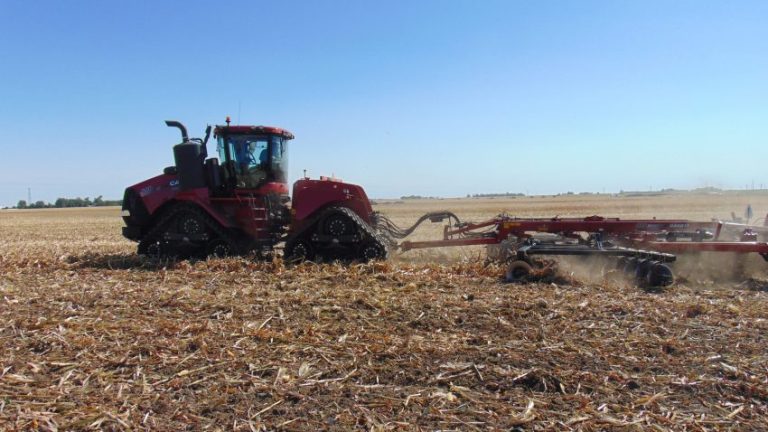Upper Midwest — Corn silage harvest is in full swing in northwest Iowa. According to experts at South Dakota State University, significant losses happen every year in silage bunkers and piles across the United States.
They tell us losses of 15 percent or more of the harvested dry matter commonly occur, representing significant financial costs. Storage losses also affect the feeding value of the remaining silage. Feeding even low levels of spoiled silage results in reduced intake, lowered digestibility, and poor cattle performance.
SDSU Extension Beef Feedlot Management Associate Warren Rusche says that optimizing silage value starts by harvesting at the right moisture content.
He tells us harvest should start at no wetter than 70 percent moisture with the goal of being completed before the crop is drier than 58 to 60 percent moisture. The length of the cut should be between one-half to three-fourth inches. Dull knives tend to tear rather than cut cleanly, making it more difficult to pack.
Rusche says that relying on how the crop looks to determine when to start chopping silage can often be deceiving. Drought-stressed corn is often wetter than it looks from the road. Modern corn hybrids are bred to stay green longer under good conditions, so corn not under stress tends to be drier than one might think just by looking.
Producers can use a microwave oven and gram scale to estimate moisture quickly and make more precise harvest decisions. Step-by-step tips for testing for moisture content in silage are available at https://extension.sdstate.edu/silage-moisture-testing-tips.
He tells us that failure to exclude oxygen from the silage pack leads to a number of fermentation issues and dry matter losses. According to Rusche, when it comes to silage fermentation, the good bacteria require anaerobic conditions. These microbes produce lactic acid resulting in a rapid drop in pH and maximum dry matter preservation. He says, “If oxygen is present, undesirable microbes such as yeast and molds feed on the most digestible nutrients, reducing the amount of recoverable dry matter and the energy content of the silage.”
Using inoculants can help increase the number of desirable bacteria, resulting in a faster pH drop and increased dry matter recovery. Inoculants can also improve aerobic stability when the silage is fed. Inoculant strains are living organisms, so avoid exposing them to excessively high temperatures.
Packing the pile well is an essential step to exclude oxygen. Keep the layers uniform and less than six inches in depth. Packing should be continuous throughout the filling process.
“Covering a silage pile is arguably the least desirable job on a farm, but vitally important to preserve feed value. An uncovered pile can lose 60 percent of the dry matter in the original top three feet. An oxygen-barrier film combined with a white-on-black plastic cover results in less loss compared to a layer of plastic alone. Cover the pile as soon as possible after harvest is completed; waiting as long as 12-24 hours after harvest significantly increases storage losses,” Rusche says.
Finally, keep safety in mind. Slopes should be no steeper than one foot to three feet (one foot of rise for three feet of horizontal) to reduce the chances of rollover. The pile shouldn’t be higher than the unloading equipment can reach in order to reduce the risk of catastrophic, even life-threatening avalanches.












